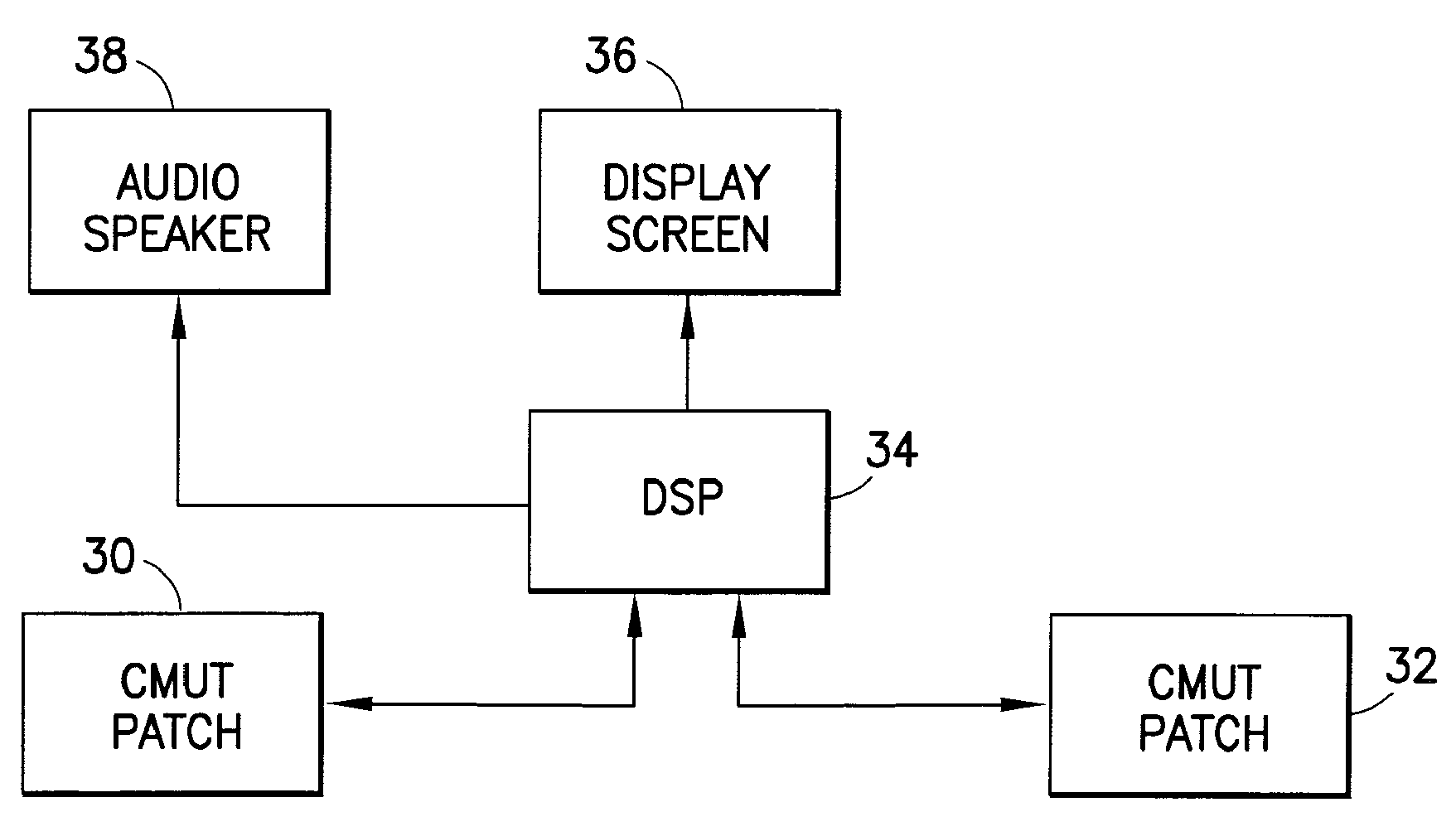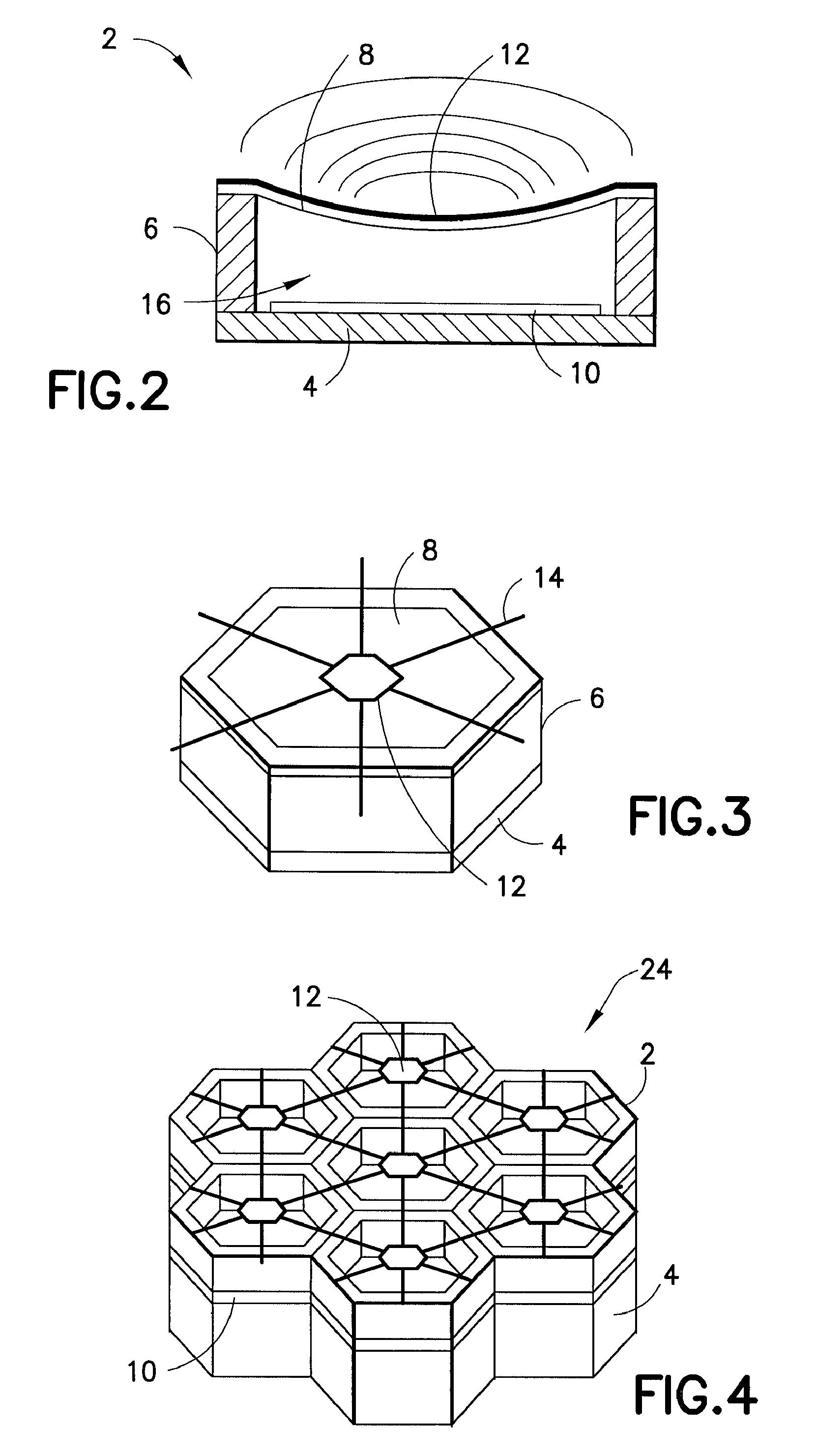Method and apparatus for non-invasive ultrasonic fetal heart rate monitoring
a non-invasive, ultrasonic technology, applied in the direction of ultrasonic/sonic/infrasonic image/data processing, mechanical vibration separation, application, etc., can solve the problems of loss of heart rate information, relative cumbersome array of singles, experienced by hospital staff members, etc., and achieve the effect of less interferen
- Summary
- Abstract
- Description
- Claims
- Application Information
AI Technical Summary
Benefits of technology
Problems solved by technology
Method used
Image
Examples
Embodiment Construction
[0031]In accordance with one embodiment of the present invention, one or more cMUT patches are adhered to the mother's abdomen. Each cMUT patch comprises a two-dimensional ultrasound transducer array that is steerable in three-dimensional space. The cMUT patches are electrically connected to a bedside instrument.
[0032]When the instrument is powered on, a search is performed to acquire the Doppler signal of the fetal heart. An initial coarse search, using wide beams and long range gates, will be followed by higher-resolution searches that will successively locate the fetal heart to a greater precision. Once the fetal heart has been located precisely, its position will be tracked using multiple sample volumes surrounding the heart's location. The sample volume that is directly over the heart's location will produce a Doppler waveform that can be processed to extract the fetal heart rate.
[0033]Based on acoustic data from the cMUT patch probes, a processor incorporated in the bedside in...
PUM
 Login to View More
Login to View More Abstract
Description
Claims
Application Information
 Login to View More
Login to View More - R&D
- Intellectual Property
- Life Sciences
- Materials
- Tech Scout
- Unparalleled Data Quality
- Higher Quality Content
- 60% Fewer Hallucinations
Browse by: Latest US Patents, China's latest patents, Technical Efficacy Thesaurus, Application Domain, Technology Topic, Popular Technical Reports.
© 2025 PatSnap. All rights reserved.Legal|Privacy policy|Modern Slavery Act Transparency Statement|Sitemap|About US| Contact US: help@patsnap.com



